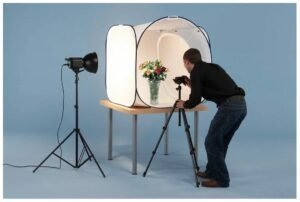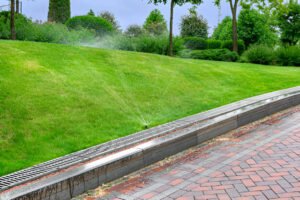Camping is a beloved outdoor activity that allows us to connect with nature, escape the hustle and bustle of daily life, and create lasting memories. At the heart of any camping experience is the tent – your home away from home in the great outdoors. With a myriad of tent options available, choosing the right one for your needs can be overwhelming.
1. Dome Tents
Design and Structure
Dome tents are one of the most popular and versatile types of camping tents. Their design typically features two flexible poles that cross at the top and bend to be anchored to the ground, creating a dome-like shape. This structure provides excellent stability and wind resistance, making dome tents suitable for various weather conditions.
Features and Benefits
One of the primary advantages of dome tents is their ease of setup. Most dome tents can be assembled quickly, even by a single person, making them ideal for solo campers or those who prefer a hassle-free camping experience. The dome shape also provides good headroom in the center of the tent, allowing for comfortable movement and storage of gear.
Dome tents are available in a wide range of sizes, from compact two-person models to larger family-sized options. Many dome tents also feature vestibules or gear lofts, providing additional storage space for camping equipment and keeping the main living area clutter-free.

Best Uses
Dome tents are incredibly versatile and can be used for various camping scenarios. They excel in:
- Car camping
- Backpacking (smaller models)
- Family camping (larger models)
- Three-season camping (spring, summer, and fall)
Their stability and wind resistance make them suitable for most weather conditions, although extreme weather may require more specialized tent designs.
2. Cabin Tents
Design and Structure
Cabin tents are designed to maximize interior space and comfort, making them an excellent choice for family camping or extended stays in the outdoors. These tents feature near-vertical walls and a flat or slightly sloped roof, resembling a small cabin or house.
Features and Benefits
The primary advantage of cabin tents is their spacious interior. The vertical walls allow for maximum headroom throughout the tent, making it easy to stand up and move around comfortably. This design also provides ample space for cots, air mattresses, and camping furniture, creating a home-like atmosphere in the great outdoors.
Many cabin tents come with room dividers, allowing for separate sleeping areas or a dedicated living space. Some models even feature multiple doors and windows, enhancing ventilation and ease of access. Additional features may include built-in storage pockets, gear lofts, and electrical cord access ports for added convenience.

Best Uses
Cabin tents are ideal for:
- Family camping
- Extended camping trips
- Campground or established campsites
- Car camping
While cabin tents offer unparalleled space and comfort, their large size and weight make them less suitable for backpacking or remote camping. They are best used in established campgrounds or car camping scenarios where transportation to the campsite is not an issue.
3. Backpacking Tents
Design and Structure
Backpacking tents are designed with weight and portability in mind, making them the go-to choice for hikers and backpackers who need to carry their shelter over long distances. These tents typically feature a lightweight, compact design that can be easily packed and transported in a backpack.
Features and Benefits
The primary advantage of backpacking tents is their low weight and small packed size. Most backpacking tents weigh between 2 to 5 pounds, depending on the size and materials used. They often utilize lightweight materials such as silnylon or Dyneema composite fabrics to reduce weight without sacrificing durability.
Despite their compact size, many backpacking tents incorporate clever design features to maximize interior space and comfort. These may include:
- Vertical or near-vertical walls to increase headroom
- Vestibules for gear storage
- Multiple doors for easy access
- Mesh panels for ventilation and stargazing

Best Uses
Backpacking tents are ideal for:
- Backpacking and thru-hiking
- Wilderness camping
- Ultralight camping
- Solo or duo camping trips
While backpacking tents excel in weight and portability, they may sacrifice some comfort and space compared to larger tent designs. They are best suited for campers who prioritize mobility and are willing to compromise on interior space for the sake of lightweight gear.
4. Instant or Pop-Up Tents
Design and Structure
Instant or pop-up tents are designed for ultimate convenience and ease of setup. These tents feature pre-attached poles or a spring-loaded frame that allows them to be set up in a matter of seconds. Simply remove the tent from its carrying bag, and it will “pop up” into shape with minimal effort.
Features and Benefits
The primary advantage of instant tents is their incredibly quick and easy setup process. This makes them ideal for campers who want to spend less time pitching their tent and more time enjoying the outdoors. Instant tents are also an excellent option for those who may struggle with traditional tent setup, such as families with young children or individuals with limited mobility.
While instant tents prioritize convenience, many models still offer features found in traditional tents, such as:
- Waterproof rainfly
- Multiple doors and windows
- Storage pockets and gear lofts
- Adjustable ventilation options

Best Uses
Instant or pop-up tents are best suited for:
- Car camping
- Festival camping
- Short camping trips
- Beginner campers
- Families with young children
While instant tents offer unparalleled convenience, they may sacrifice some durability and weather resistance compared to traditional tent designs. They are best used in fair weather conditions and established campgrounds where ease of setup is a priority.
5. Four-Season Tents
Design and Structure
Four-season tents, also known as mountaineering or expedition tents, are designed to withstand extreme weather conditions and provide shelter in harsh environments. These tents typically feature a robust, low-profile design with multiple poles and reinforced fabrics to withstand high winds and heavy snow loads.
Features and Benefits
The primary advantage of four-season tents is their ability to provide reliable shelter in extreme weather conditions. Key features of four-season tents include:
- Sturdy pole structure with multiple intersection points for increased stability
- Durable, waterproof fabrics with a higher denier rating
- Reinforced guy-out points and stakes for enhanced wind resistance
- Minimal mesh panels to retain warmth and block wind
- Snow skirts or extended rainfly to prevent snow from entering the tent
Four-season tents often incorporate vestibules for gear storage and may feature multiple doors for easy access in challenging conditions. Some models also offer removable inner tents or modular designs, allowing for versatility in different seasons or environments.

Best Uses
Four-season tents are ideal for:
- Winter camping
- High-altitude mountaineering
- Alpine expeditions
- Extreme weather conditions
While four-season tents excel in harsh environments, their robust design often results in increased weight and packed size compared to three-season tents. They may also be less comfortable in warmer conditions due to reduced ventilation. Four-season tents are best suited for experienced campers and adventurers who frequently camp in challenging weather conditions or at high altitudes.
5 Types of Tents for Camping
| Tent Type | Best Uses | Key Features | Pros | Cons |
|---|---|---|---|---|
| Dome Tents | Car camping, backpacking, family camping | Curved pole structure, good stability | Versatile, easy setup, good headroom | Limited space in larger sizes |
| Cabin Tents | Family camping, extended trips, car camping | Vertical walls, spacious interior | Maximum living space, room dividers | Heavy, bulky, not suitable for backpacking |
| Backpacking Tents | Backpacking, wilderness camping, ultralight trips | Lightweight materials, compact design | Portable, easy to carry | Limited space, may sacrifice some comfort |
| Instant/Pop-Up Tents | Car camping, festivals, short trips | Pre-attached poles, rapid setup | Quick and easy setup, convenient | May sacrifice durability, less weather-resistant |
| Four-Season Tents | Winter camping, mountaineering, extreme conditions | Robust design, reinforced materials | Excellent weather resistance, durable | Heavy, expensive, less comfortable in warm weather |
FAQs (Frequently Asked Questions)
Q: How do I choose the right size tent for my camping needs?
A: Consider the number of people who will be sleeping in the tent, as well as any additional gear you need to store. It’s generally recommended to choose a tent rated for one or two people more than your group size to ensure comfortable living space.
Q: Are all tents waterproof?
A: While most modern tents are designed to be water-resistant, not all tents are fully waterproof. Look for tents with a high waterproof rating (measured in millimeters) and sealed seams for the best protection against rain and moisture.
Q: How do I properly care for and maintain my camping tent?
A: To maintain your tent, always clean it before storage, allow it to dry completely to prevent mold and mildew, and store it in a cool, dry place. Regularly inspect and repair any damage to the fabric or seams, and reapply waterproofing treatments as needed.
Q: Can I use a three-season tent for winter camping?
A: While it’s possible to use a three-season tent for mild winter conditions, it’s not recommended for extreme cold or heavy snow. Four-season tents are specifically designed to withstand harsh winter environments and provide better protection against cold temperatures and snow loads.
Q: Are expensive tents always better than budget options?
A: Not necessarily. While higher-priced tents often offer better quality materials and construction, there are many budget-friendly options that provide excellent value for casual campers. Consider your specific needs and camping frequency when deciding on your budget.
Q: How important is tent ventilation?
A: Proper ventilation is crucial for reducing condensation inside the tent and maintaining a comfortable sleeping environment. Look for tents with mesh panels, adjustable vents, or multiple doors to promote air circulation.
Q: Can I use a backpacking tent for car camping?
A: Yes, you can use a backpacking tent for car camping. However, you may want to consider a larger or more comfortable option if weight and packed size are not primary concerns.
Q: How do I choose between freestanding and non-freestanding tents?
A: Freestanding tents are easier to set up and can be moved after assembly, making them more versatile. Non-freestanding tents often require stakes or guy lines for support but may be lighter and more compact. Consider your camping style and preferences when choosing between the two.
Final Words
Choosing the right tent for your camping adventures is essential for ensuring a comfortable and enjoyable outdoor experience. By understanding the unique features and benefits of dome tents, cabin tents, backpacking tents, instant tents, and four-season tents, you can make an informed decision that best suits your camping style and needs.











